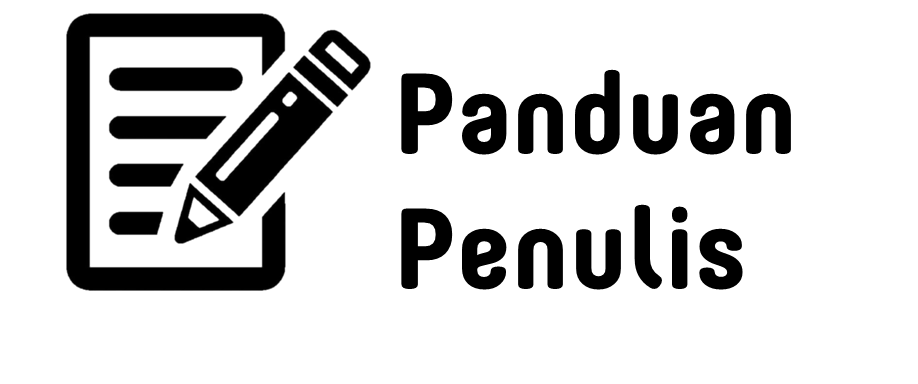EFEKTIVITAS SALEP EKSTRAK DAUN BAMBU, MENIRAN, BIJI PEPAYA SEBAGAI PENJINAK TUMOR DAN KANKER PAYUDARA
DOI:
https://doi.org/10.56655/jid.v2i1.87Keywords:
bamboo leaf, flavonoids, cancer, breast, ointment, tumorAbstract
Bamboo plants are a source of flavonoids which are beneficial for the health of the body. To treat tumors and breast cancer, this study aims to make a synergistic ointment from the extracts of papaya seeds, meniran and bamboo leaves and a white vaseline base. Methods of data collection using experiments with accidental sampling method in the form of respondents who have had tumors and breast cancer. Data analysis used descriptive comparative analysis. Vaseline, papaya seed extract, meniran extract, and bamboo leaf extract form the composition of the bamboo leaf extract ointment. The bamboo leaf extraction process was carried out using a maceration strategy using 95% ethanol solvent. This cream-like ointment has a brown color, a pH of 6.5 and smells like bamboo leaf extract. The ointment has a spread of 3.5 cm and an adhesion time of 3.66 seconds. The content of flavonoids in the ointment was 0.1633% w/w QE and phenolics 0.371% w/w GAE. The content of cancer-preventing substances in salmon with 10 ppm is 10.09%. The ointment has an inhibitory effect on Gram-positive microorganisms of 9 mm, 10 mm and 11 mm. The results showed that there was a decrease in the size of breast tumors with a diameter of (3-5 cm) to (0.5-1 cm) with the treatment given 3 times a day for 124 days. Some respondents with stage IIA breast cancer experienced a reduction in pain and tender lumps with the treatment of giving ointment 3x a day for 17-37. The study concluded that an ointment containing meniran, papaya seeds, and bamboo leaf extract was effective against breast cancer and tumor tamer.
References
Ambarwati, R. (2021). Formulasi dan uji aktivitas antibakteri sediasan salep ekstrak etanol daun haredong bulu (Clidemia hirta L.) terhadap bakteri Staphylococcus epidermidis. Fitofarmaka: Jurnal Ilmiah Farmasi, 11(2), 147-154. DOI : 10.33751/jf.v11i2.3314
Anggraito, Y. U., Susanti, R., Iswari, R. S., Yuniastuti, A., Lisdiana, Nugrahaningsih, W. H., Habibah, N. A., Bintari, S. H. (2018). Metabolit sekunder dari tanaman: Aplikasi dan produksi. Universitas Negeri Semarang
Dewi, I G. A. K., Wrasiati, L. P., Putra G. P. G. (2020). Karakteristik teh daun bambu tali (Gigantochloa apus Kurz.) pada metode blansir dan suhu pengeringan. Jurnal Rekayasa dan Manajemen Agroindustri, 8(3), 388-398. DOI: https://doi.org/10.24843/JRMA.2020.v08.i03.p08
Chairani, R. Z. & Delyuzar. (2017). Perbandingan antara neoplasma jinak dan ganas pada payudara berdasarkan pemeriksaan fisik diagnostik dan biopsi aspirasi jarum halus. Ibnu Sina Biomedika, 1(2), 102-112. DOI: https://doi.org/10.30596/isb.v1i2.1655
Fauzy, A. (2019). Metode Sampling. Universitas Terbuka.
Gusnadi, D., Taufiq, R., Baharta, E. (2021). Uji organoleptik dan daya terima pada produk mousse berbasis tapai singkong sebagai komoditi UMKM di Kabupaten Bandung. Jurnal Inovasi Penelitian, 1(12), 2883-2888. https://doi.org/10.47492/jip.v1i12.606
Hakim, Z. R., Purbarini, K. A., Tjiptasurasa. (2018). Uji iritasi akut dermal pada hewan uji kelinci albino terhadap sediaan body lotion ekstrak kulit biji pinang (Areca catechu L.). Farmaka, 18(1), 1-13. https://doi.org/10.24198/jf.v18i1.18513.g12574
Hidayati, A. N., Damayanti, Sari, M., Alinda, M. D., Reza, N. R., Anggraeni, S., Widia, Y. (2019). Infeksi bakteri di kulit. Airlangga University Press.
Hikmah, U. & Triastuti, A. (2022). Mekanisme dan senyawa bioaktif imunomodulator Phyllanthus niruri (meniran). Jurnal Ilmiah Farmasi (Scientific Journal of Pharmacy), 18(2), 205-218.
Ibrahim, A., Alang, A. H., Madi, Baharuddin, Ahmad, M. A., Darmawati. (2018). Metodologi Penelitian. Gunadarma Ilmu.
Indratmoko, S. & Utami, T. F. Y. (2018). Buku Petunjuk Praktikum Farmasetika Dasar. Stikes Al Irsyad Al Islamiyah Cilacap.
Kementerian Kesehatan. (2019, 31 Januari). Penyakit kanker di Indonesia berada pada urutan 8 di Asia Tenggara dan urutan 23 di Asia. Online dari: http://p2p.kemkes.go.id/penyakit-kanker-di-indonesia-berada-pada-urutan-8-di-asia-tenggara-dan-urutan-23-di-asia/ (akses 17 April 2023).
Kementerian Kesehatan. (2023, 2 Februari). Kanker payudara paling banyak di Indonesia, Kemenkes targetkan pemerataan layanan kesehatan. Online dari: https://www.kemkes.go.id/article/view/22020400002/kanker-payudara-paling-banyak-di-indonesia-kemenkes-targetkan-pemerataan-layanan-kesehatan.html (akses 17 April 2023).
Khoirunnisa, I., & Sumiwi, S. A. (2019). Peran flavonoid pada berbagai aktivitas farmakologi. Farmaka, 17(2), 131-142. https://doi.org/10.24198/jf.v17i2.21922.g11628
Lasut, T. M., Tiwow, G. A. R., Tumbel, S. L., Karundeng, E. Z. Z. S. (2019). Uji stabilitas fisik sediaan salep ekstrak etanol daun nangka Artocarpus heterophyllus Lamk. Jurnal Biofarmasetikal Tropis, 2(1), 63-70. https://doi.org/10.55724/jbiofartrop.v2i1.40
Najmah, Hasim, Faridah, D. N. (2021). Antioxidant activity, inhibition ?-glucosidase of Cymbopogon nardus (L.) rendle and identification of active compounds. Current Biochemistry, 8(1), 24-36. https://doi.org/10.29244/cb.6.1.7
Oktarina, D. R., Susilowati, Y., Halimah, E. (2021). The potential of Phyllanthus genus plants as immunomodulatory and anti inflammatory. Indonesian Journal of Biological Pharmacy, 1(2), 47-77. https://doi.org/10.24198/ijbp.v1i2.37027.g16944
Oneonco. (2022, 19 Desember). Kelompok usia yang punya risiko tinggi kanker payudara. Online dari: https://oneonco.co.id/blog/kelompok-usia-yang-punya-risiko-tinggi-kanker-payudara/ (akses 17 April 2023).
Panitia Penyusun. (2014) Farmakope Indonesia (Edisi V). Kementerian Kesehatan Republik Indonesia.
Romansyah, E., Dewi, E. S., Suhairin, Muanah, Ridho, R. (2019). Identifikasi senyawa kimia daun bambu segar sebagai bahan penetral limbah cair. Jurnal Agrotek, 6(2), 77-81. DOI: https://doi.org/10.31764/agrotek.v6i2.1219
Samudra, N. E., Untari, E. K., Wahdaningsih, S. (2021). Hubungan tingkat pengetahuan dan pola penggunaan obat tradisional terhadap kualitas kesehatan masyarakat. Jurnal Mahasiswa Farmasi Fakultas Kedokteran UNTAN, 5(1).
Ulfa, N. M., Kusumo, G. G., Zulfa, I. M. (2018). Farmakologi-Farmakognisi Terapan: Biji Pepaya sebagai Alternatif Anti Kanker Payudara (Carcinoma Mamae). Penerbit: Akademi Farmasi Surabaya.
Ulfa, N. M., Kusumo, G. G., Zulfa, I. M. (2019). Anealisis Uji Pendahuluan Aktivitas Antikanker Ekstrak Biji Pepaya (Carica papaya L) dengan Metode BSLT. Journal of Pharmacy and Science, 4(1), 7-10. DOI: https://doi.org/10.53342/pharmasci.v4i1.122
Zappavigna, S., Cossu, A. M., Grimaldi, A., Bocchetti, M., Ferraro, G. A., Nicoletti, G. F., Filosa, R., Caraglia, M. (2020). Anti-inflammatory drugs as anticancer agents. International Journal of Molecular Sciences, 21(7), 2605. DOI: 10.3390/ijms21072605







